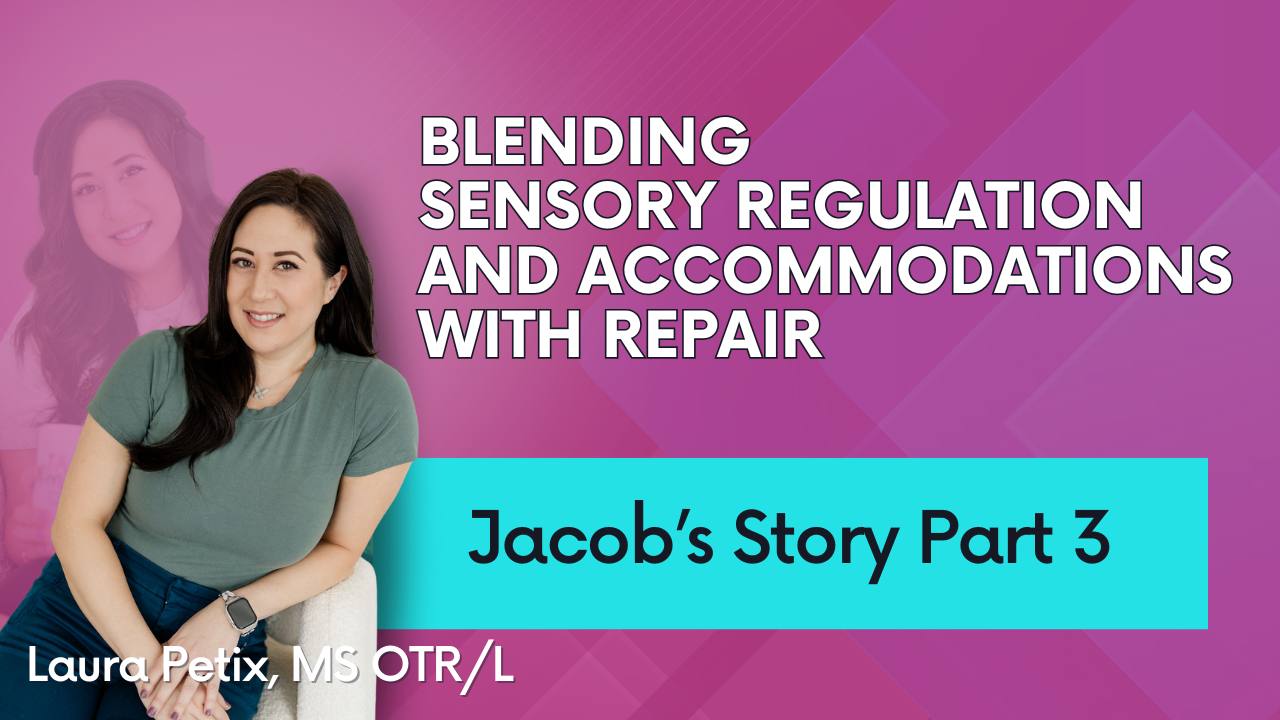What's happening at recess?

We’re on part 3 of Theo’s story and today I want to share our plan for supporting Theo’s elopement behaviors at school. Stay till the end because I want to share something Theo said that gives me so much confidence in his ability to learn self regulation skills sooner rather than later.
Click here to go to part 2 of Theo's story
How to handle elopement
Let’s get one thing very clear here: kids don’t elope for fun. Kids don’t elope to be bad. They don’t really do anything to intentionally be bad, but specifically- when you see a kid make a mad dash, especially in a public setting, it’s their sympathetic nervous system taking control.
Quick review: The sympathetic nervous system is your fight or flight system. In this case, elopement (or running away) is literally the ‘flight’ part. This means the nervous system is perceiving a threat from the environment and sends signals throughout the body to put it into action to stay alive.
So if you know a child who has a history of elopement, it is really important to understand why and see how (if) you can make accommodations to decrease the likelihood that their nervous system will activate the “flight” mode.
For Theo, the end of recess seemed to be a huge theme. We hypothesized that it could be related to the startle from the sound of the recess bell, or the dysregulation from having to stop playing and transition back to the classroom. For a lot of sensory seekers who run and play and move actively at recess, the abrupt stop when the bell rings can be tricky for their nervous system to handle. It’s like doing a full sprint then coming to a full stop without slowly walking it off or doing a cool down period.
Knowing that Theo has a high need for movement, we focused more on the latter.
Some suggestions we discussed were:
✅ To have him wear the compression vest or weighted vest out to recess
✅ Give him a specific job towards the last minute of recess like to collect the lost jackets, water bottles or bring back the equipment. He can spend a few more minutes outside after the bell rings to help the custodian collect objects left behind.
A major win for Theo
Theo’s mother shared that his teacher recognized forward progress for Theo. Even though he still attempted to elope during recess, he came back, apologized AND asked for a hug! That is a major win because this shows that Theo is starting to be able to recognize his own dysregulation and he’s learning how to advocate for the strategies that he needs. He knew his body just needed a tight squeeze.
Remember in last week’s newsletter, I emphasized Theo’s high threshold for proprioceptive input- that’s the kind of input he’s getting from a tight hug.
It’s great that Theo recognized his need for a hug, but what about times when he can’t just ask someone for a hug?
These are some things that Theo’s mother tried out
✅ Giving him a weighted stuffy to squeeze
✅ Teaching him how to give himself a tight hug/squeeze
✅ Looking into sensory tools like a compression vest or body sock
These tools are all options that could work in the classroom, as well as at home. The deep input to the muscles, tendons and joints sends cues to the nervous system that the body is safe, and can help “disarm” the danger signals being sent to the body.
In next week’s final part to Theo’s story, find out the very specific and helpful clue he gave his mom during one of his dysregulated moments.

Continue learning from me:





Responses